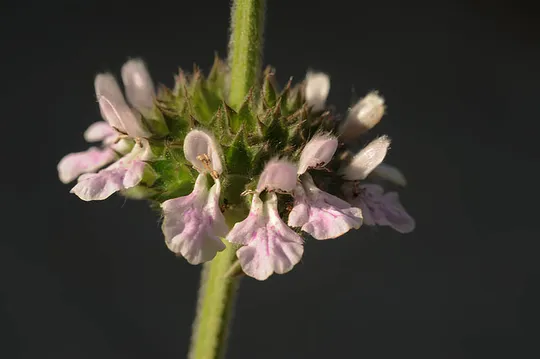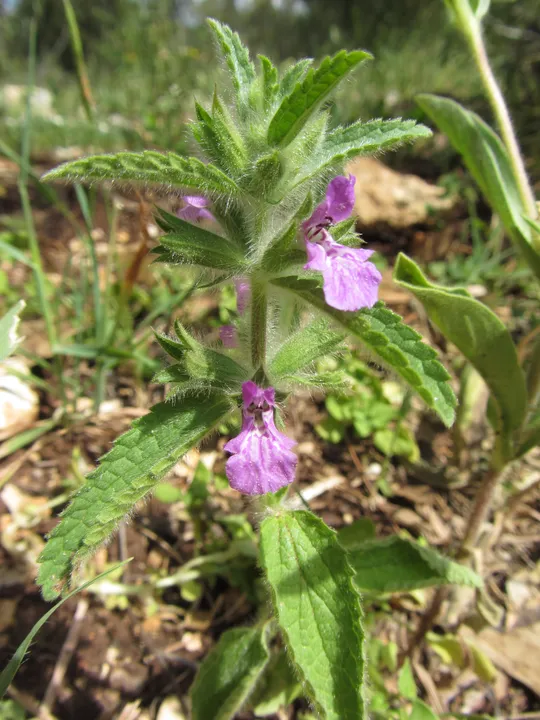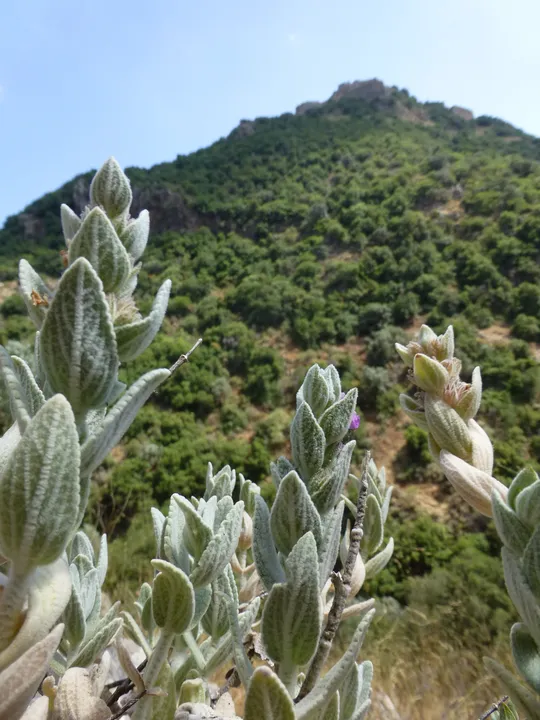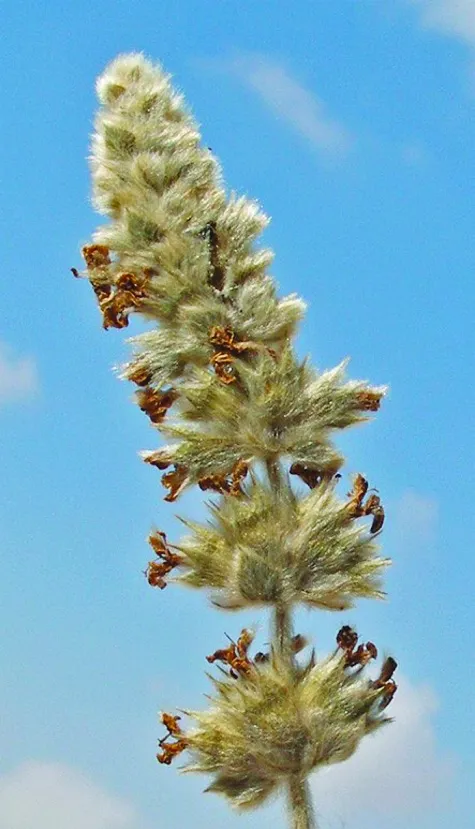Corn Woundwort, Field Woundwort
Stachys arvensis
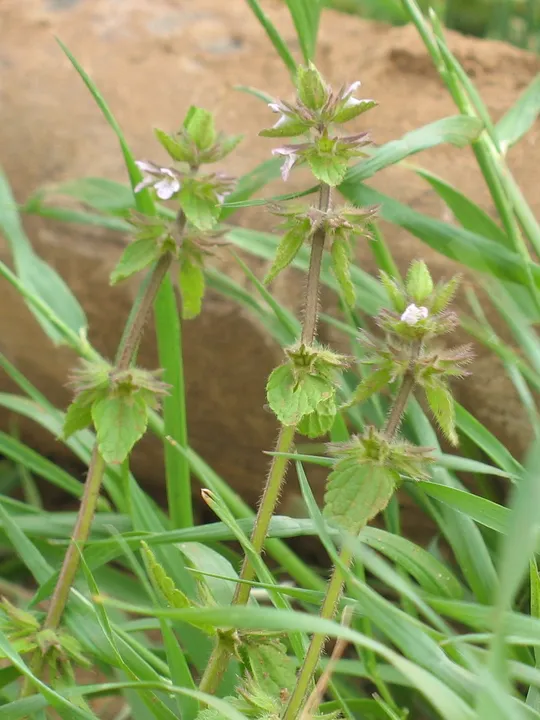
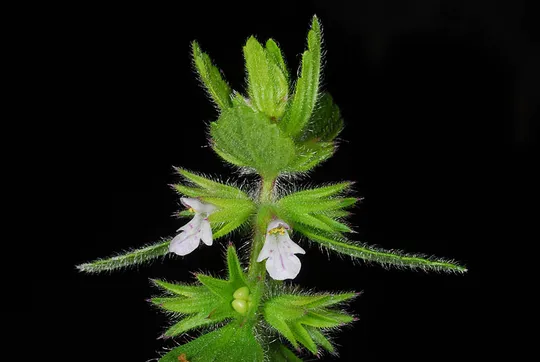
Stachys arvensis grows only in the Sharon. Of the 10 sites where the plant was once found in the 1990s, only four were located: Hadasim Nature Reserve, West and East Ilanot and Hod HaSharon. The species was recently found (2006) near the banks of the Yarkon Stream near the Morasha Junction (Amit Mendelssohn). S. arvensis has become extinct from a number of important sites: Herzliya, Kfar Yona and "Sdot Ayalon" (probably the Ayalon highway today). The populations found on two sites in the Philistean Plain region in the 20th century (Rishon LeZion and Petah Tikva) have become extinct, and all efforts to locate the plant in the region have failed.
On the edges of fields on heavy soil mixed with hamra soil, and on uncultivated areas and hedgerows on hamra soil.
Stachys is a very large and varied genus that includes different taxa that are difficult to characterize according to common morphological traits. The genus includes 300 species whose distribution centers are in temperate areas of the Old and New World, although many species grow in Australia, in subtropical areas, and in the mountains of Africa. The prevalent life form is an herbaceous perennial; however, many of the species are annuals. The genus belongs to the Labiatae family, but only a few of the species serve as herbs or medicinal plants.
Stachys arvensis belongs to the group of annual species in the genus Stachys, which differ greatly in size and inflorescence. In S. arvensis the flower protrudes only slightly from the calyx, unlike S. neurocalycina (the most common annual Stachys in Israel) whose striking pink corolla is very prominent. In these two species the stem splits at its base into mostly slanting branches, while the two other annual Stachys species in Israel, S. arabica and S. zoharyana, have tall erect stems and much larger flowers (20-25 mm long). Another, smaller annual Stachys, S. woronowii grows on the Hermon and is considered by some to be systematically close S. arvensis.
• The main threat to Stachys arvensis is habitat destruction. The species is associated exclusively with hamra soils on the coastal plain.
• The species is endangered because it has very few populations, all of whom are very small. The number of individuals in populations on surviving sites surveyed between 1987 and 1997 range from a few to circa 100.
• S. arvensis is protected only in the Hadasim Nature Reserve
• Its sites are extremely fragmented, with extensive built up areas between them, which prevents gene exchange between populations.
• The species is not globally threatened.
The two Stachys arvensis populations should be monitored, restored and preserved (requires a management program that includes regular moderate disturbance)
Stachys arvensis is common mainly in the Mediterranean area, in parts from Europe, and penetrates (probably as an invader rather than naturally) other distant areas. It is found in almost all Mediterranean countries – from Spain, Morocco, Algeria, France and Italy in the west and Turkey, Crete and Lebanon in the east. It is absent from Syria and Cyprus. In the Atlantic Ocean, S. arvensis grows in the Canary Islands, the Azores and the Cape Verde Islands. It is a ruderal species in central and western Europe, as well as in South America and South Africa. Its presence in remote countries and continents testifies to its invasive capacity as an annual plant, which grows rapidly and is capable of maintaining a large seed bank in the soil for many years.
Stachys arvensis is an extremely rare annual that grows on the edges of fields on hamra soil on the coastal plains. Construction and development on the coastal plain led to the extinction of populations in the past. The Sharon populations are the southern edge of the global distribution of the species in the eastern Mediterranean basin (northern peripheral plant). S. arvensis represents a restricted group of calciphobic plants that are limited to the coastal plain, associated with sandy soils and endangered in Israel because of habitat destruction. However, in Europe and in the Mediterranean countries they are relatively common and not endangered.
Current Occupancy Map
| 1000 squre meter pixel | 5000 squre meter pixel | 10000 squre meter pixel | |
|---|---|---|---|
| number of observations | 0 | 0 | 0 |
| in total pixels | 0 | 0 | 0 |
| Family | Lamiaceae |
| Classification | On the endangered species list |
| Ecosystem | Coastal area |
| Chorotype | Mediterranean (Western Euro-Siberian) |
| Conservation Site | Ilanot and Hadasim Nature Reserve |
| Rarity |
1
3
6
|
|---|---|
| Vulnerability |
0
4
4
|
| Attractiveness |
0
0
4
|
| Endemism |
0
0
4
|
| Red number |
1
4.2
10
|
| Peripherality | N |
| IUCN category | DD EW EX LC CR EN VU NT |
| Threat Definition according to the red book | Endangered |
 Based on:
Based on:
